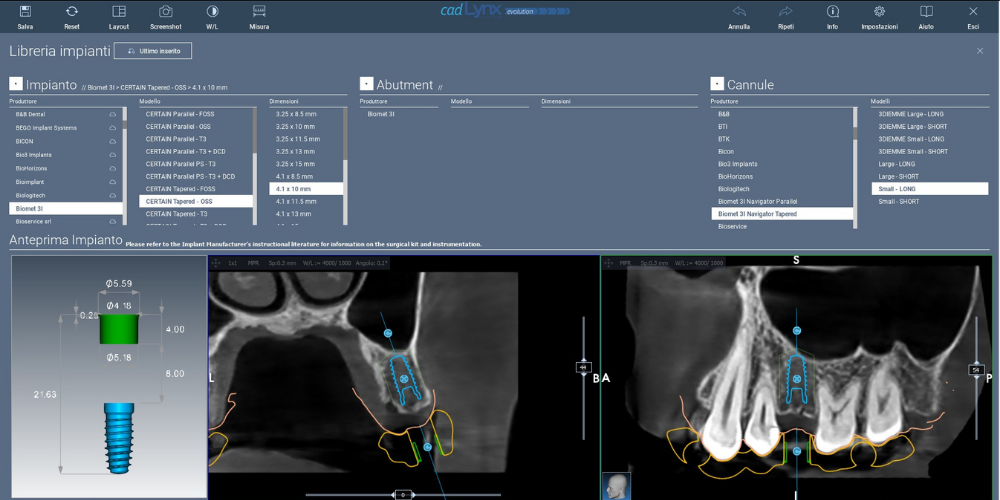
The use of guided surgery, thanks to surgical procedures that use software and three-dimensional radiological techniques (CBCT, scanners, etc.), makes it possible to carry out surgery with precise and minimally invasive operations.
The advantage over traditional techniques is that they work on a two-dimensional basis, which does not allow the evaluation of thicknesses or heights of the different anatomical regions, resulting in a less accurate valuation.
But how to proceed with guided surgery?
The first step is a CAT scan, which is carried out using a specific radiological mask or a suitably modified prosthesis that will simulate the position of the dental elements to be fitted.
Subsequently, software will be used to match the dental elements to the patient's anatomical model by means of three-dimensional superimposition, thus allowing
- a visualisation of the patient's complete anatomy allowing the identification of anatomical structures at risk
- planning the position of the implants
- creation of a surgical guide that allows the preparation of the implant sites.
Through guided surgery, it is possible to perform operations without incision of the soft tissues and consequently without stitches, resulting in patient comfort. The healing time also benefits.
What are the advantages and possible disadvantages of using guided surgery?
The advantages of using this technique are many. They certainly overcome the initial barriers to finding benefit for both the patient and the clinician. But what might they be?
Download the infographic to discover the advantages and disadvantages of guided surgery:
